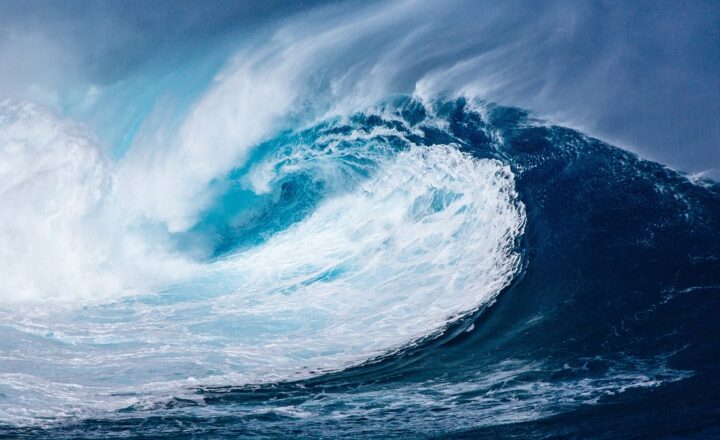
Waves are an integral part of our universe, taking various forms, each with unique characteristics and behaviors. From the rhythmic crashing of ocean waves on a shoreline to the ethereal properties of light, waves shape our experiences and understanding of the world. This article delves into the fundamental principles behind waves, exploring the journey of both ocean waves and light waves through different mediums.
1. Understanding Waves: The Basics
At its core, a wave is a disturbance that transfers energy from one point to another, moving through different mediums such as air, water, or even space. Waves can be categorized into two main types: mechanical waves and electromagnetic waves.
– Mechanical Waves: These require a medium for propagation. Ocean waves are a classic example of mechanical waves, consisting of water particles that move in a circular motion as energy travels through the water.
– Electromagnetic Waves: Unlike mechanical waves, these do not require a medium and can travel through the vacuum of space. Light waves, radio waves, and infrared waves fall into this category.
With these definitions in mind, let’s take a closer look at the different forms of waves and how they propagate.
2. The Journey of Ocean Waves
Ocean waves are perhaps the most familiar type of mechanical wave. They are generated by various factors, including wind, seismic activity, and gravitational forces.
2.1 Formation of Ocean Waves
Waves begin when wind blows across the surface of the ocean, transferring its energy to the water. As the wind continues to blow, ripples form, which gradually grow in size. Factors influencing the formation of ocean waves include:
– Wind Speed: Stronger winds result in larger waves.
– Fetch: The distance over which the wind blows. A longer fetch allows waves to build more energy and size.
– Time: The duration the wind blows over the water surface also affects wave height.
2.2 Wave Propagation and Behavior
Once formed, waves travel across the surface of the water. As they propagate, they can interact with various factors such as:
– Depth of Water: Waves travel faster in deeper water; they slow down and increase in height as they approach shallower regions, resulting in breakers.
– Obstacles: Islands, reefs, and coastlines can alter the direction and intensity of waves, creating phenomena like wave refraction and diffraction.
– Tides and Currents: These oceanic processes also influence wave behavior, resulting in complex interactions and effects.
Understanding the journey and behavior of ocean waves sheds light on their foundational importance to coastal ecosystems and climate regulation.
3. The Nature of Light Waves
Light waves represent a fascinating form of electromagnetic radiation, exhibiting unique properties compared to mechanical waves.
3.1 Characteristics of Light Waves
Light waves oscillate in electric and magnetic fields, which propagate at the speed of light (approximately 299,792 kilometers per second in a vacuum). Key characteristics include:
– Wavelength: The distance between successive peaks of a wave; shorter wavelengths produce higher frequencies, which correspond to blue light, while longer wavelengths correspond to red light.
– Frequency: The number of wave cycles that pass a point in one second, measured in hertz (Hz).
– Amplitude: The height of the wave, which determines the brightness of the light perceived.
3.2 Wave-Particle Duality
One of the most intriguing aspects of light waves is their wave-particle duality. Light can behave both as a wave and as a stream of particles called photons. This duality explains various phenomena, including:
– Refraction: When light passes from one medium to another (e.g., air to water), it changes speed and direction, creating the bending effect observed in a straw placed in a glass of water.
– Interference: Light waves can overlap and combine in ways that can amplify or diminish the resultant light intensity, leading to colorful patterns in phenomena like soap bubbles or oil slicks.
– Diffraction: Light waves can bend around obstacles, producing patterns of light and shadow that are visible during various experiments.
The behavior of light waves, deeply rooted in physics, plays an integral role in technology, photography, and communication.
4. Commonalities Between Ocean and Light Waves
While ocean waves and light waves differ significantly in their nature and mechanisms, they also share some fundamental properties:
– Energy Transfer: Both types of waves transfer energy across spaces, influencing their environments as they propagate.
– Speed Variances: The speed of wave propagation varies based on the medium. Ocean waves travel faster in deeper waters, while light waves travel fastest in a vacuum, slower in denser materials.
– Interference and Reflection: Both types of waves can experience interference, reflection, and refraction based on external factors and barriers.
These shared features underscore the universal nature of waves across different contexts, establishing a connection between mechanical and electromagnetic phenomena.
5. Conclusion: Waves as Fundamental Phenomena
Waves are powerful forces that shape our understanding of the physical world. From the majestic ocean waves that create beachside vistas to the light waves that illuminate the darkness, they both play essential roles in our environment and technology.
As we explore further into the intricacies of waves, we uncover their influence on art, science, culture, and technology, ultimately realizing that every wave carries stories of energy, motion, and connection within our universe. Whether it’s the calming sound of waves lapping at the shore or the burst of light illuminating our surroundings, waves are a testament to the awe-inspiring complexity of our world.








